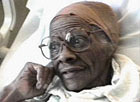
To Live Until I Die 2003
Distributed by Fanlight Productions, 32 Court St., 21st Floor, Brooklyn, NY 11201; 800-876-1710
Produced by Jay Shefsky
Directed by Jay Shefsky
VHS, color, 60 min.
College - Adult
Health Sciences, Death and Dying
Date Entered: 11/09/2018
Reviewed by Lori Widzinski, Health Sciences Library, University at Buffalo, State University of New YorkTo Live Until I Die is an introduction to hospice, to six hospice patients, to their health care providers, to their families, and to their diseases just as they are all being introduced to death. After producer Jay Shefsky’s ill father-in-law was brought to their house to die, he wanted to see if he could find out what it means to die a good death.
As each person is interviewed, the true mission of hospice unfolds. Their philosophy, not of dying, but of the “care that embraces you and your family to live” is quite evident. Each conversation allows us to see how hospice works at home, in nursing homes, and in hospitals, and by the end of the film it seems the most natural way to help accept death as part of life, something not always valued in our society. These patients are examples of how important it is to gain control over our last days, and die the way we want to, the way that is best for us.
From the beginning the film is imbued with Shefsky’s eagerness and sincerity to discover the choices available in the United States today for a “good death.” Yet, as the personas of the patients take over the film, the energy shifts and as Shefsky himself states towards the end of the program, it is still about death and no one really wants to see it come. Shefsky has masterfully introduced six different patients with different outlooks on life and death to create a solid overview of hospice. It would be a challenge to feel this connected to six different people in an hour anywhere else. From the unaffected poignancy of Leo Isaac, openly and intelligently facing his ALS, to the captivating Mrs. Lee who professes her love of life and of her husband, to Inge Rimpel, the lively, sprite woman who is ready to go whenever death comes for her, the lessons of life and death are there to see.
Highly recommended for academic health sciences, psychology, and death and dying collections.